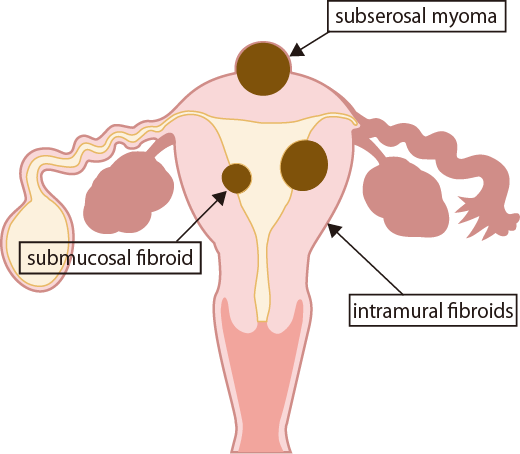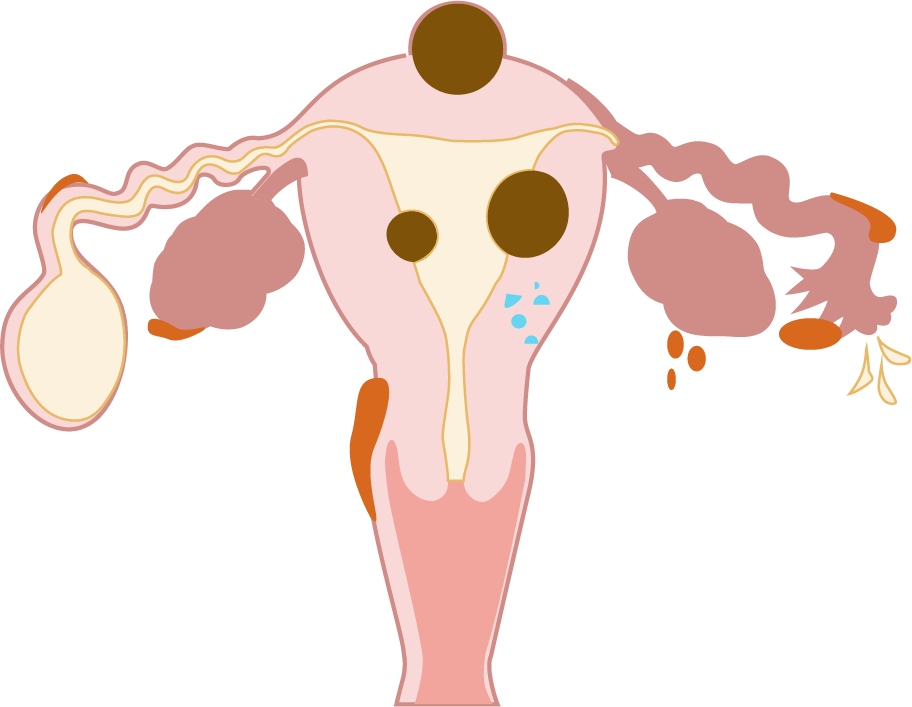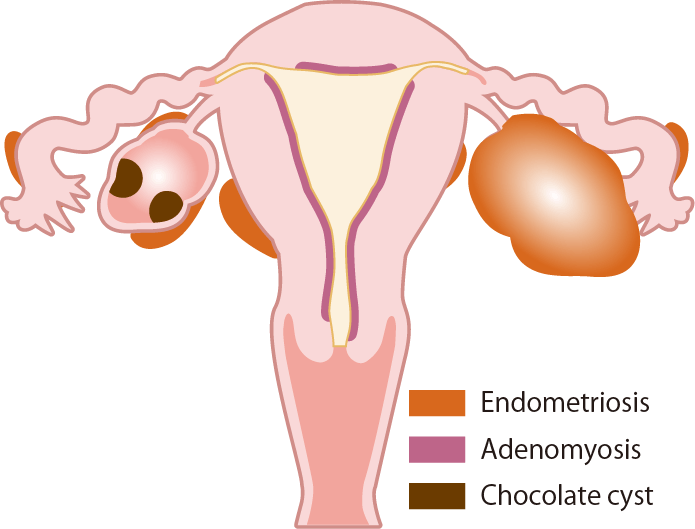When planning to conceive, it is important to be aware that uterine disorders can cause implantation failure and hinder pregnancy.
Infertility and implantation failure are topics covered in our special feature on implantation.
Please refer to the Implantation Special page for more information.
Please inquire before your visit as each facility may handle things differently.
Our Ginza location only handles infertility treatment.

The uterus is primarily composed of a type of muscle called smooth muscle.
When these muscles develop benign tumors, it is referred to as uterine fibroids, and it causes the formation of "nodules" or "lumps" in the uterus.
Uterine fibroids can cause symptoms such as difficult menstruation, heavy menstrual bleeding, anemia, and can be a cause of infertility and recurrent pregnancy loss.
Although rare, some larger fibroids can be malignant and referred to as leiomyosarcomas.
The secretion of ovarian hormones can be suppressed through nasal sprays or injections, which can help control the growth of fibroids or even shrink them.
As a symptomatic treatment, low-dose birth control pills can also be used to manage menstrual pain and heavy bleeding.
In cases where the symptoms are severe, the fibroids are large, or they are causing infertility, surgical removal may be necessary.
There are various surgical methods available.
While complete removal of the uterus is an option, our clinic specializes in fertility-preserving treatments, and we generally recommend surgery that focuses on removing the fibroids only.
In addition to conventional open surgery, there are also laparoscopic procedures performed using a laparoscope and hysteroscopic procedures using a resectoscope.
Each method has its advantages and disadvantages, and the suitability of each method depends on individual circumstances.
The approach may vary for unmarried individuals, those actively planning pregnancy, individuals undergoing infertility treatment, and those nearing menopause.
Therefore, we offer counseling to tailor the treatment options to each individual's specific condition.










